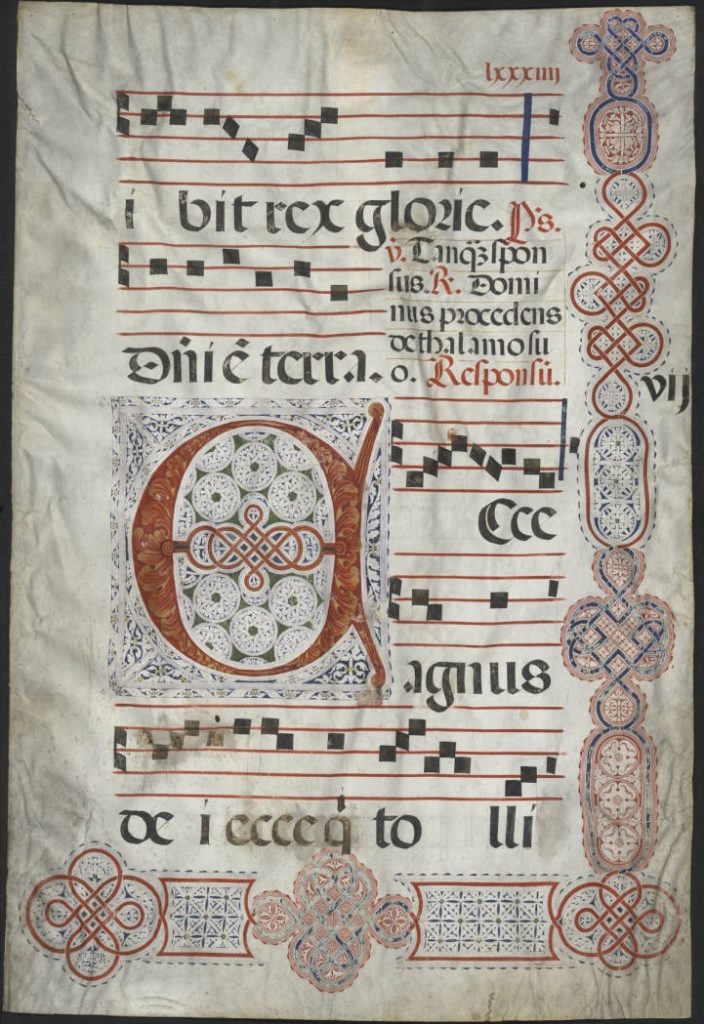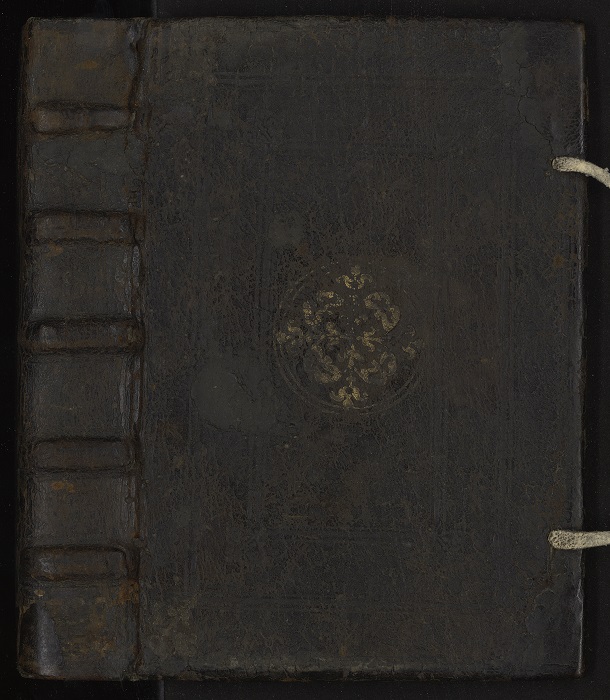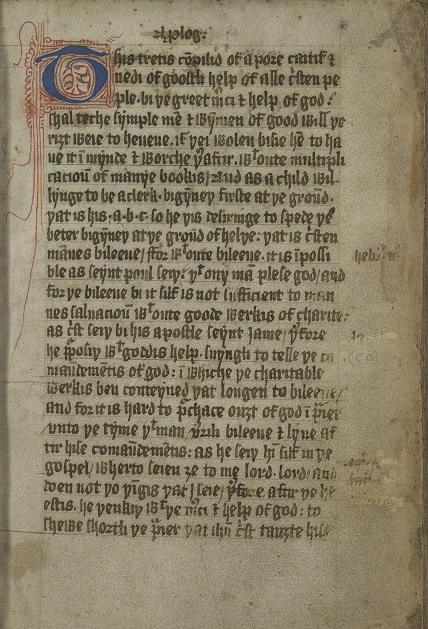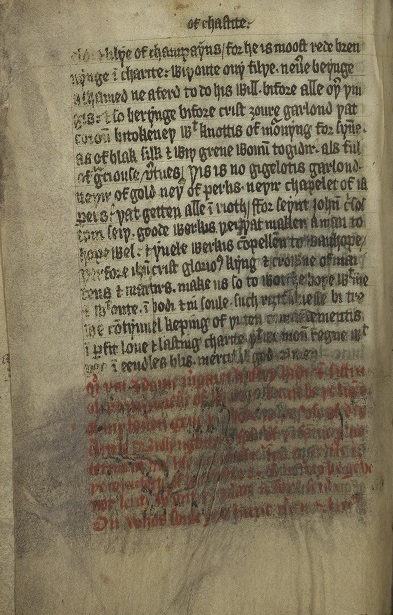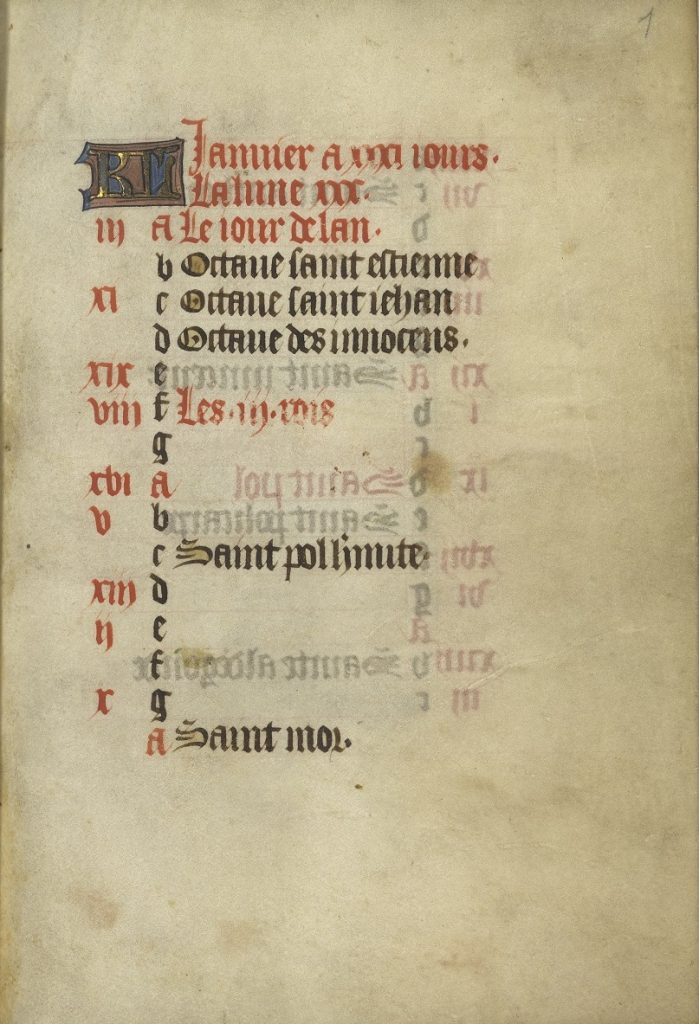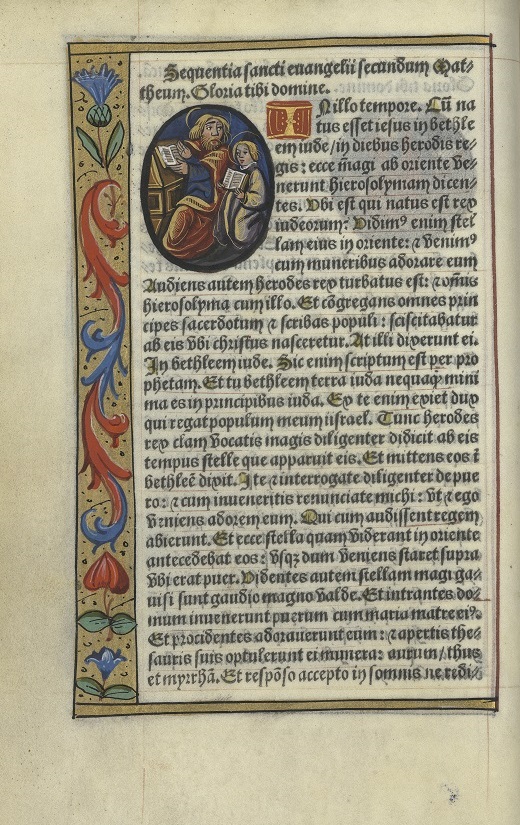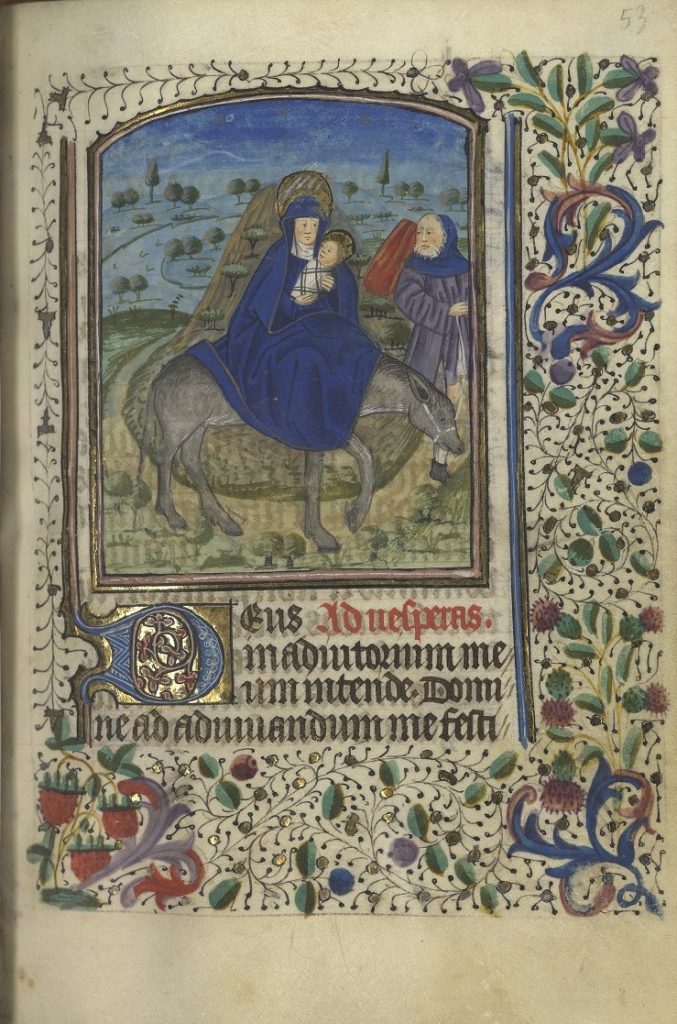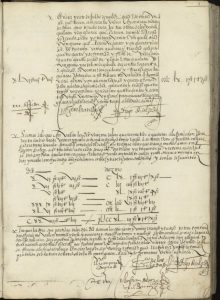
As part of the Philadelphia Area Consortium of Special Collections Libraries (PACSCL) project Bibliotheca Philadelphiensis, the Special Collections Research Center has been cataloging and digitizing its medieval and early modern collections, which include financial ledgers, notated music, a Book of Hours, and philosophical texts.
While illuminated manuscripts are what immediately comes to mind when most people think of medieval manuscripts, Temple’s collections are a little different. We do hold the beautiful Book of Hours: Use of Toul from the 15th century, but the bulk of our medieval and early modern manuscripts are financial or legal documents.
While less artistically inclined, these manuscripts provide a glimpse into the everyday life of the period: how people held and transferred property, how businesses conducted their work, how banks managed their customers’ money, and how governments taxed their citizens.
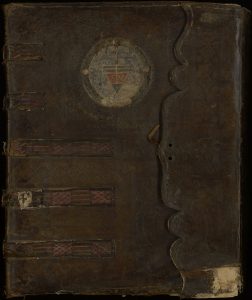
In that last category, the Spanish Treasury in Peru Account Book is a ledger maintained by the Royal Treasury of Peru in 1571, then under Spanish control. The volume records not only general revenue and expenses, but also the tributes forcibly levied against the native people whose land was colonized by Spain. Another 16th century volume, an Italian Banking Ledger covering 1593-1595, is notable primarily for its extravagant binding and large size: over 19 inches tall. It contains debits and credits for a banking firm based in Rome.
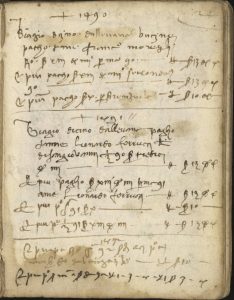
An earlier manuscript, the Florentine Grain Dealer Account Book, which covers the years 1466-1524, contains entries showing payments made for grain, rent, taxes, alms, and other income for this Italian business. The Marcoux Family Estate Account Book, which begins around the same time but continues into the 18th century, documents income for the estate, which was located in Dauphiné, France. The volume contains pages written right side up and upside down, as well as multiple paging conventions—perhaps to be expected in a ledger used for around three hundred years.
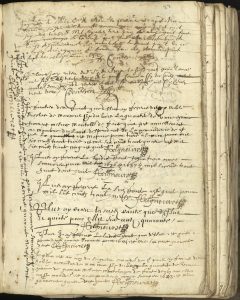
These are just four of the finance-related manuscripts recently digitized for the project. All four belong to SCRC’s Harry C. Cochran History of Business Collection, which was established by Temple University Head Librarian Walter Hausdorfer in 1950. The Cochran Collection includes a wide range of manuscripts and a smaller number of books documenting the evolution of commerce in Europe and the Americas between the 4th and 20th centuries.
The Bibliotheca Philadelphiensis project is funded by the Council on Library and Information Resources (CLIR), and aims to digitize and make available online medieval manuscripts from fifteen institutions in the Philadelphia area. Images and descriptive metadata will be released into the public domain and easily downloadable at high resolution via University of Pennsylvania Libraries’ OPenn manuscript portal. Temple is contributing nearly forty manuscripts to the project. SCRC’s digitized manuscripts are also being added to Temple’s Digital Collections website.
–Katy Rawdon, Coordinator of Technical Services, SCRC
